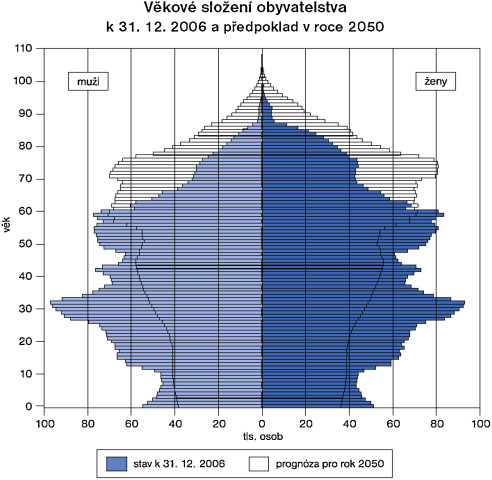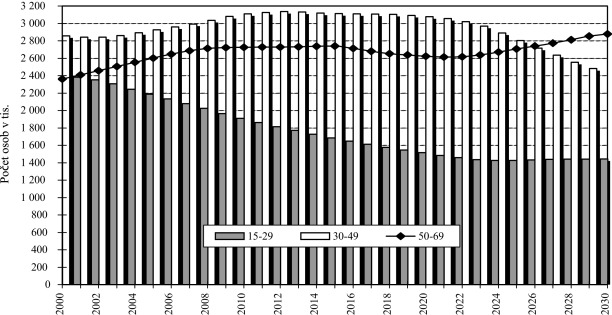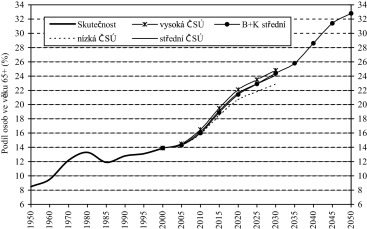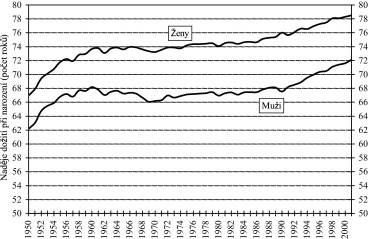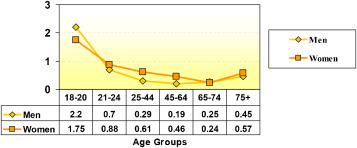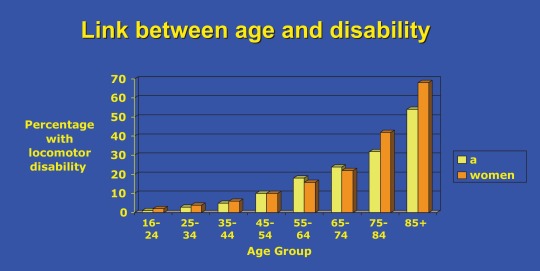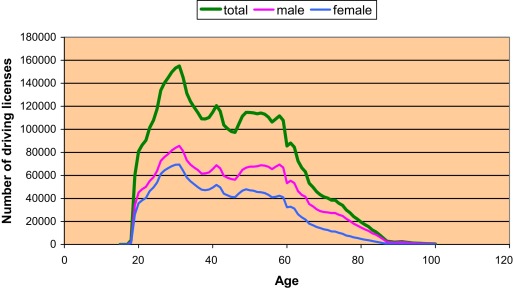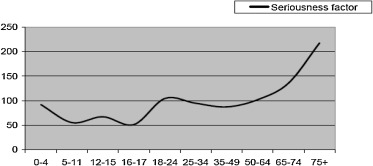Abstract
In the Czech Republic owning and utilising of a car is one of the best remedies against a diminishing of cruising radius in old age and a comfortable mean to sustain autonomy and independence of living as well as social relations. Physical handicaps and limits of the elderly could be compensated today by sophisticated technical solutions. Promotion of specialised driver-assistance systems in the cars and advancement of the demand for age relevant cars with high-tech-optimisation should be the remedy; It is expected that these technical means will be used to a far greater degree in the future for the purposes of preventing road accidents (active safety) and to reduce the impact of the road accidents that do occur (passive safety) to senior citizens. The use of telematic should help in preventing accidents. Technical development increasing the safety of vehicles for older passengers need not be the privilege of a few. It will be necessary to co-operate with manufacturers to ensure that technical innovations are available to all and attainable as soon as possible for a wide range of new vehicles. The possibilities for equipping older vehicles already on the roads with new technical means of prevention should also be investigated.
With changing attitudes and conditions the desire to travel for services, business and leisure represents a potential major new source of ideas for IVIS and ADAS designers and producers.
Senior drivers represent a potential major new source of ideas for IVIS and ADAS designers and producers. The telematic development including IVIS and ADAS designed to reduce traffic accidents and to support elderly drivers in a suitable and user-oriented way may be appropriate solution.
Keywords
Intelligent transportation systems ; Demographic changes ; Disabled people ; Ageing ; Telematic ; Sustainable mobility ; Urban transport ; Road safety
Introduction
Due to demographic changes older and disabled people represent a significant and permanently growing part of Czech population. There has been a progressive increase over the past decade in the social awareness of the requirements for older and disabled people throughout the Czech Republic and other parts of the Central Europe. This progression has moved from making provision for older and disabled people on a welfare-oriented basis, towards increasingly equal access to all facilities as a matter of human rights. Improving access to any form of safe mobility and travel provides additional social, as well as economic benefits at personal, governmental and commercial levels (Fig. 1 ).
|
|
|
Figure 1. Division of the Czech population according age in the past (year 2006) and in the future (year 2050).
|
Demographic changes
Demographic trends indicate a marked rise in the number of elderly people in the Czech population and there is a high correlation between age and some form of disability. The share of elderly people in the total population is expected to rise from 21% today to around 31% by the year 2020 and to around 34% by the year 2050. Disabled people represent around 13% of the nation. Various initiatives recognise the needs of elderly people. The older generation as a target group is evolving; its size as well as structure is changing during the time. The population of advanced European countries is getting older; pessimistic forecasts expect that within twenty years the number of post-productive citizens will catch up with and even exceed the numbers of other age categories. As to the structure, the number of women in this group prevails, and this is becoming even more distinct with the growing age. From the economic point of view, this group on the whole comes under poorer groups, which particularly applies to elderly people living alone (just one person without a partner or a wider family). The higher-age groups also include working citizens (in this group men prevail); senior citizens are often active members of various associations, clubs and other interest groups. Technical facilities of their households and availability of basic living needs enables them to live relatively independent lives in their permanent domiciles or even in their summerhouses (Fig. 2 ).
|
|
|
Figure 2. Different ageing trends of different groups of Czech population.
|
Even though essential features are common, this group is very heterogeneous as to the physical and mental health and overall physical and mental condition. The standing and needs of healthy seniors are significantly different from those of more or less ill individuals, not to mention the disabled.
There would be no point to lengthening human life if this meant merely lengthening suffering for individuals and increasing problems for society as a whole. The aim both for ageing individuals themselves and for society is to delay ageing and, in close connection with the biological and social sciences, to seek ways of maintaining mans mental clarity and physical condition for as long as possible. The aim is also to find ways of compensating for the inevitable losses which come with increasing age, ways of increasing mans ability to adapt to the changes occurring both in his own organism and in the surrounding world, and ways of extending the period of time for which man is self-sufficient, useful to his surroundings and able to get something out of life for himself, without proving a burden to himself or his surroundings (Table 1 , Fig. 3 ).
| Gender | 1920 | 1930 | 1945 | 1950 | 1960 | 1970 | 1980 | 1990 | 2000 | 2004 | 2070 |
|---|---|---|---|---|---|---|---|---|---|---|---|
| Men | 47.05 | 54.22 | 50.96 | 62.31 | 67.92 | 66.13 | 66.81 | 67.58 | 71.65 | 72.07 | 120a |
| Women | 49.6 | 58.04 | 58.96 | 67 | 73.4 | 73.02 | 73.86 | 75.36 | 78.41 | 79.04 | 120a |
a. Expectation of the gerontologists.
Source : ČSÚ.
|
|
|
Figure 3. Forecast of the demographic changes according the Czech national statistical authority – share of persons aged over 65.
|
The answers to the following questions in particular are closely associated with the quality of life of senior citizens:
- How is their lifestyle in old age related to their life up to that time, with the habits they have acquired, with the important events which have occurred in their lives, with their original life plans and the extent to which they have managed to implement them; what life strategies can then be recommended as being more successful, i.e. which will lead to better overall adaptation in later stages of life.
- What factors determine how people react subjectively to the fact of their own ageing, how they come to terms with the inevitable changes, how they are capable of maintaining a feeling of satisfaction in life at an advanced age, what psychological lessons can be used as a basis for preparation for their own ageing and how can they learn to make conscious use of the advantages of old age.
- How do social factors contribute to more or less adaptive (successful) ageing and what circumstances outside the sphere of influence of the individual can have a significant influence on the course of ageing; in what areas is there still great scope for society to improve conditions for its senior citizens in psychological and sociological terms, and so on (Fig. 4 ).
|
|
|
Figure 4. Differences in life expectancy between different gender groups.
|
The road safety of older drivers is a point of public interest and critical discussion. Of course: deficits and losses in traffic relevant performances and capabilities could cause a higher risk of traffic accidents for older driver in relation to younger ones. Data from American research (i.e. Brown and McGwin, 1999 ) suggest that this is also true in European countries. But the findings in the relevant European literature don’t support this opinion. The age group with the – by far – highest risk is the group of young drivers and beginners between 18 and 24 years of age. Even if we take into consideration the reduced driving performance of the older driver and make a relation between number of accidents and driving performance (in km per year), we get no other information: The older drivers are relatively sure drivers (Jansen et al., 2001 , Hakamies-Blomqvist, 1999 and Jansen et al., 2001 ). The accident proneness increases in old age (about 75 years) and in the case of a remarkable low driving performance (and that means: low practice).
Traffic safety – elderly drivers’ problems:
- Problems in complex traffic situations
- Difficulties to react in time
- Problems to use new technical equipment/lower adaptability
- Problems to develop new patterns and forms of skills and behaviour.
Car driving in old age would be more safely, there are many ways to reach that: by altering construction principles of cars, by improving environmental elements and by changing behaviour strategies of the elderly their selves (Fig. 5 ).
|
|
|
Figure 5. Risk of accidents per 1 million km driving performance.
|
In relation to mobility for senior citizens we might mention a number of changes in the psychology of ageing people. The overall decline in performance is not the same in all areas. Certain capabilities and skills can, under favourable conditions, be maintained to an old age. The decline in certain mental functions occurs gradually, in some areas as early as in middle age. With ageing the functional capacity of the organism declines in two principle areas:
- Worsening perception and information processing or declining ability to evaluate information.
- Worsening motor skills, i.e. a decline in the ability to master ones surroundings (e.g. the controls of a vehicle) or ones own body (reduced muscle power and possible arthritic problems reduce fitness). A specific change associated with the biological process of ageing is a slowing-down of mental processes, beginning with the phase of stimulus processing. Changes in perception play a part in slowing down reactions. Rapid and adequate responses are one of the conditions to safe driving.
Ageing also has an influence on thinking, memory, emotional life, motivation and other aspects of life, although as there are great individual differences in these areas no overall generalisation can be made. As in earlier stages of life social factors also play a role in determining mental development in old age. The social position of the individual changes, previous social relationships become impoverished, and ones dependence on other people and on society increases.
Changes occur to ones values and motivations in the area of personality. Ones attitude towards oneself and towards other people and society also changes. These changes to internal and external conditions place increased demands on mans ability to adapt. This ability to adapt is, however, itself reduced in old age, for which reason it is extremely important to prepare for old age. A great deal depends on the attitude taken to old people by society, the climate it creates for them, how it respects their right to a satisfied life and what specific measures it takes in this regard. Most, however, perhaps depends on the individual himself. The important thing is when (if at all) one thinks about ones lifestyle and decides to make changes (with a view to ones future needs and life) and makes a realistic assessment of ones strengths and possibilities.
The following can be seen as the positive aspects of old age:
Old age does not mean degradation. Many of the changes, which occur, can be compensated for. Good mental and physical fitness can be maintained to a great age by remaining active and taking part in appropriate activities. Even old people can live happily, take part in social activities and even drive a vehicle safely, particularly if they drive frequently. Problems are particularly likely to appear in the case of a long break (several months for example).
Man is the only living creature that knows that he will grow old and is able to prepare for old age. His expectations may even be joyful – he will have more time for his interests and hobbies. He can, for example, spend more time working on his car and plan and make excursions.
Senior citizens and their needs
There is still great scope for society to improve the conditions necessary to a satisfied old age. Even in retirement it is possible to give people the chance of undertaking activities useful to society, to prevent the existential uncertainty of old age and the loss of social prestige, social contacts leading to complete isolation, etc.
The course of human ageing and the subjective experience of quality of life in this period depends to a considerable degree on the individuals expectations of old age, on how he reacts to the changes which have occurred, and how he manages to come to terms with them. Ones attitude towards ones own age depends, first and foremost, on the way in which ageing takes place on the biological, psychological and social level. Mans initial experiences of his own ageing generally induce unwelcome feelings. The changes noticed take the form of a progressive loss, decline and diminution, i.e. altogether a minus (Fig. 6 ).
|
|
|
Figure 6. Age determined health status.
|
Under normal circumstances man is able to take a realistic view of his own ageing and has enough time to adapt to the changes occurring. In general, however, a feeling of dissatisfaction with oneself increases with advancing age. Old age places greater demands on the ability to adapt and exposes man to a greater psychological burden, which increases the likelihood of anxiety and neurotic difficulties. There is an important correlation between neurotic difficulties and dissatisfaction relating to ones health, marriage (and children) and the impossibility of making the most of ones abilities.
Factors contributing to changes in self-perception
Among the factors contributing to changes in self-perception are shifts in the socio-economic status of the elderly and the attitude taken to the elderly by society. If a person is to maintain a feeling of satisfaction in life, then he must come to terms in an appropriate manner with the changes which ageing brings, and must find new forms of adapting to life. Man finds satisfaction in three principal areas of life – family life, working life and social life. The importance of these areas to overall satisfaction with life falls with advancing age, though not necessarily equally. Generally the richest source of satisfaction in life remains the family. The area of internal experience is generally of greater importance in old age. The question of quality of life and satisfaction in old age is important both for social practice and for the individual. Determining the degree to which a person feels satisfied is one of the principal indicators of personal adaptation in old age. A high degree of dissatisfaction with life may result in a pathological reaction producing complications both for those immediately affected and for society as a whole.
Active people, with great creative strength and energy, enjoy a better chance of satisfaction in later periods of life.
The fact that for most people old age is accompanied by a significant change in their social standing and a number of other conditions is important from the viewpoint of quality of life, lifestyle and social factors. People who have gone into retirement involuntarily are generally less successful at adapting to ageing and tend to experience more psychological problems at a later age. Going into retirement generally means losing far more than just the opportunity to work. Economic status also changes along with social status, and the opportunity for social contact is also often noticeably reduced. In subjective terms people who have been of most use to society at a productive age, who liked their work and devoted their entire productive age to it, who have gained the respect of their colleagues, and so on, stand to lose the most. The role played by ageing persons within their own family also changes. Generally they no longer exert such an influence on younger members of the family as they did before. The status of older members of the family generally falls. Previous social contacts become fewer, as do the opportunities for making new contacts. This sudden loss of inter-personal relationships (the death of a spouse, a close relative or friend) is reflected in a worsening of both mental and physiological functions. It is impossible to prevent social losses. Society can, however, be expected to resolve the problems faced by lonely elderly persons in an effective manner.
Mobility behaviour and mobility satisfaction by the elderly
The mobility of older people, which affects their access to facilities, decreases with increasing age. Not only do many of them become physically less able to move about but fewer own cars than other age groups. This may be less to do with age than with that generation of old people. Travel declines with age and this is sharper for women than for men (Pharoah and Warnes, 1992 ). Elderly women, many of whom probably never learnt to drive, were less likely to have a car than men, and people living alone were also likely not to have a car.
Subjective aspects
A stressful factor for elderly citizens is their feelings of being excluded from the society, not being useful, fear of loneliness or non-prospective future. Their mobility may become one of the factors contributing to their more optimistic view. For example, in the investigation of mental condition of the experimental group of elderly drivers, questionnaire methods compiled for a “regular” population of elderly people focused on the detection of possible depression or loss of vitality have completely failed, particularly in the area of viewing the future, perceiving age-related problems, personal restrictions, etc., since no or very few negative views were formulated regardless of the citizens’ physical age or serious illness. The factor of strong dependence on being a holder of a driving license was ascertained (contrary to the actual driving): even though it was proven that further driving was risky, the persons involved were incapable of being self-critical, did not cope with the situation, remained helpless and often responded in a hostile and aggressive manner with feelings of injustice and wrongdoing. The immediate family is also often non-critical; on the other hand, well-intended efforts to discourage the granddad from driving are often perceived as the plotting of the family and more likely to arouse paranoid reactions than gratitude. Elderly drivers often have a personal relationship to their vehicle, for example formulated, as “we will make it to the end together”. Other researches also came to the same conclusion; it means that it is a mere myth that elderly people would be happy to voluntarily give up driving their own cars if a bus stopped right in front of their homes.
One of the general features of old age is a certain stiffness and adherence to the hitherto way of life, rigidity, unwillingness or inability to accept new ways of behaviour or come to terms with a new environment. Changes are adopted with negative feelings, surrounding activities including traffic are perceived as non-tolerant or even hostile. To be sincere, the reality is often reflected in these feelings: elderly drivers are perceived as slow and dangerous obstacles to those who love fast driving; senior pedestrians are not ‘fast enough’ crossing the road on zebra crossings and, furthermore, they walk wherever they wish to; elderly citizens in the means of public transport bother other passengers by wanting to sit down; on the whole, senior citizens create obstacles in the dynamic pace of life of younger generations.
Subjective experience and management of external conditions
Important are findings related to the “mobile performance” of senior citizens. Their most frequent activities are carried out in short distances, mostly on foot. Differences have been found between the population of cities and villages, between men and women, lonely persons and people living with a partner or a family. Women and lonely people usually move in the vicinity of their homes.
As to the involvement in traffic, elderly people are mostly pedestrians, bicycle riders (in the countries with cycling tradition), passengers, users of public transport, but in European countries also drivers. As to the sex, so far men have significantly prevailed among drivers; however, in the coming generation of senior citizens the share of female drivers is considerably increasing and when todays pre-retirement generation gets old, this difference will be erased.
Ageing people need autonomy and mobility to maintain a high quality of life in old age. Less mobility implies also less social contact, more loneliness and decreasing physical and mental health. Safety and security is very important issue for the senior citizens (to be and to feel safe) – perceived lack of safety is stressing factor.
Elderly road users – private car drivers
In modern societies owning and utilising of a car is one of the best remedies against a diminishing of cruising radius in old age and a comfortable mean to sustain autonomy and independence of living as well as social relations. Physical handicaps of the elderly could be compensated. But in modern societies with its increasing proportion of older drivers’ resentments against senior citizens as drivers of a car are widespread. Negative attitudes of the younger population could be barriers against a type of mobility of the elderly, which actually is a favoured one in our society. Scientific research shows that resentments against older drivers are not justified.
Because of the demographic process of societal ageing the proportion of older drivers (60 years and older) to all drivers added up to 25% In the future (2040) 25% of the car drivers will be 65 years and older. To a great extend this development is due to the fact, that the older women are the most rapidly increasing group among the owners of driver licences.
The degree of individual availability of a car among European senior citizens is high. Following the Outdoor Mobility Survey of the year 1995 (Mollenkopf and Flaschenträger, 2001 ), nearly 80% of the household of the seniors from 55 to 64 years of age have a car of their own (single persons less than couples or families). Regarding seniors of 80 years or older, 20% of them have access to an own car anyhow. Men are better equipped than women; nearly all of the men of the “young old” group can actively participate in motorised traffic.
Owning a driver licence and a car produces the need to use them and creates a sense of being integrated in the community of all citizens. A driver license and a car are very important aspects of competence and independency of the elderly people of nowadays. They are able to drive and they want to drive.
Change of reasons for driving
Because of the loss of occupational obligations older drivers have a less driving performance as younger ones, only 50–70% of the younger drivers. We can observe changes in the face of aims or purposes of driving, too. Visiting relatives and friends becomes the most important purpose of using the own car in old age. This stresses the relevance of motorised mobility for the maintenance of the social network. A second important purpose is related to activities of supply in daily living (i.e. shopping), a third to leisure time and holidays (Jansen et al., 2001 , but with subjects of 55 years of age and older).
Driving as an individuals choice of transportation is a key issue for the mobility of the elderly. In the European society, the older population is increasing both in absolute and relative terms, and there will by a corresponding increase in the number of elderly people holding a driving licence. The mean frequency of elderly drivers on European roads can be approximated to around 12% of all drivers today. This is expected to reach more than 20% by year 2020. During this process the numbers of older drivers will become evenly distributed between the genders due to an even more significant increase in the number of elderly female drivers (Fig. 7 ).
|
|
|
Figure 7. Gender and driving licence ownership.
|
Increases in age-related competences like defensive driving behaviour, and improved anticipation may compensate for age related decline in perception, cognitive capabilities and functioning. As a result, elderly drivers are usually, not over represented in driving crash statistics. However, elderly drivers tend to be more often involved in specific types of crashes in situations, such as intersections, or, when changing lanes, merging with traffic or leaving a parking position. Moreover, the prevalence of different illnesses leading to dementia in different forms is about 5–7% among the elderly. Many of these are currently not diagnosed sufficiently early enough by existing assessment schemes for elderly drivers (Fig. 8 ).
|
|
|
Figure 8. Driving and estimated injury risk.
|
At the pan-European level, current certification of “fitness to drive” schemes for ageing drivers differ widely between the member states of EU: in terms of periodicity of checks, assessment practices and tools, assessor profiles etc. Furthermore, basic information concerning the development of rational policies for deciding who should drive amongst the elderly driving population is currently missing.
Technical centred aspects
To be mobile could be facilitated by implementation of additional safety measures in the streets to compensate aged-relevant deficits (like better illumination in streets, video-controlled public space, SOS-Telephones, IVIS – In Vehicle Information Systems and ADAS Advanced Driver Aid Systems).
Promotion of driver-assistance systems in the cars and advancement of the demand for age relevant cars with high-tech-optimisation is needed; with changing attitudes and conditions the desire to travel for medical and social care, lifelong education, business and leisure represents a potential major new source of ideas for IVIS and ADAS designers and producers.
IVIS and ADAS appliances should help to the senior drivers:
- reduce the level of complexity and
- reduce the level of uncertainty
- offer an aid or substitution for deteriorating senses
Intelligent communication for transportation systems (such as ITS), combining and integrating the whole range of communication systems with logistical transportation systems, “intelligent” cars (telematic systems) and electronically managed road & rail traffic will be highly beneficial.
Sustainable technical development must be including elderly people; “sustainable” means a mindset to realise compatibility of technical development, economic growth, social development and use of natural resources. Before implementation, modern technical solutions have to make up the balance in these main issues. Design principles should be following:
- Senior drivers represent a potential major new source of ideas for IVIS and ADAS designers and producers. IVIS and ADAS role in transportation: designed to reduce traffic accidents and to support elderly drivers in a suitable and user-oriented way (Fig. 9 )
|
|
|
Figure 9. Assets of ADAS and IVIS.
|
User friendly design and use
- Support of self-confidence
- Bearable cost of the appliance or of the system
- Integration of the functions/simplification of the use
- Information campaigns among elderly drivers needed
- Compensation of degenerating physical and sensory abilities: navigation, distance keeping, lane keeping, obstacles signalisation
Potential drawbacks of ITS for seniors:
- Information overload because narrower sensory capacity
- Danger of distraction because of slower reactions
- Loose of skills because of lower mileage
- Possible stressful impact of very complex situations
- Too much trusting on a system
Conclusion
The use of telematics should help in preventing accidents. It is expected that these technical means will be used to a far greater degree in the future for the purposes of preventing road accidents (active safety) and to reduce the impact of the road accidents that do occur (passive safety) to senior citizens. Technical development increasing the safety of vehicles for passengers need not be the privilege of a few. It will be necessary to co-operate with manufacturers to ensure that technical innovations are available to all and attainable as soon as possible for a wide range of new vehicles. The possibilities for equipping older vehicles already on the roads with new technical means of prevention should also be investigated.
This project was elaborated within the TUD COST Action TU1209 Transport Equity Analysis: assessment and integration of equity criteria in transportation planning (TEA).
Conflict of interest
The author declares that there is no conflict of interest.
References
- Brown and McGwin, 1999 D.B. Brown, G. McGwin; Characteristics of traffic crashes among young, middle-aged, and older drivers; Accid. Anal. Prev., 31 (May (3)) (1999), pp. 181–198
- Hakamies-Blomqvist, 1999 L. Hakamies-Blomqvist; Äldre trafikanter som samhälleig fråga: etik, ekonomi, eller säkerhet?; K. Spolander (Ed.), Nya persektiv I trafiksäkerhetsforskningen. KFBs workshop om forskningsfrågor, Tammsvik (1999) KFB Meddelande 2000:1. Stockholm: KFB
- Jansen et al., 2001 E. Jansen, H. Holte, C. Jung, V. Kahmann, K. Moritz, C. Rietz, G. Rudinger, C. Weidemann; Ältere Menschen im künftigen Sicherheitssystem Strasse/Fahrzeug/Mensch; Berichte der Bundesanstalt für Strassenwesen, Mensch und Sicherheit, Heft M134. Wirtschaftsverlag NW, Bremerhaven (2001)
- Mollenkopf and Flaschenträger, 2001 H. Mollenkopf, P. Flaschenträger; Erhaltung von Mobilität im Alter. Stuttgart; Berlin; Köln; Kohlhammer; (2001) (Schriftenreihe des Bundesministeriums für Familie, Senioren, Frauen und Jugend; Bd. 197)
- Pharoah and Warnes, 1992 T. Pharoah, A. Warnes; Personal travel and transport; A. Warnes (Ed.), Homes and Travel: Local Live in the Third Age, Carnegie, UK Trust, Dunfermline (1992)
Document information
Published on 05/10/16
Licence: Other
Share this document
Keywords
claim authorship
Are you one of the authors of this document?

